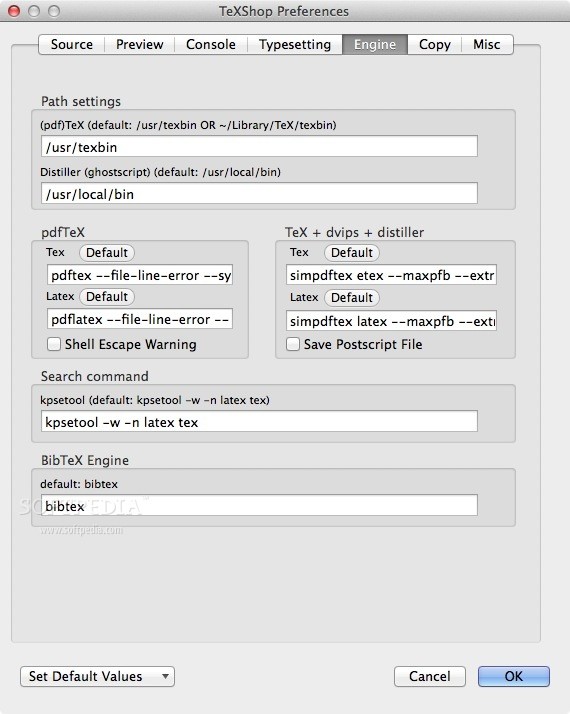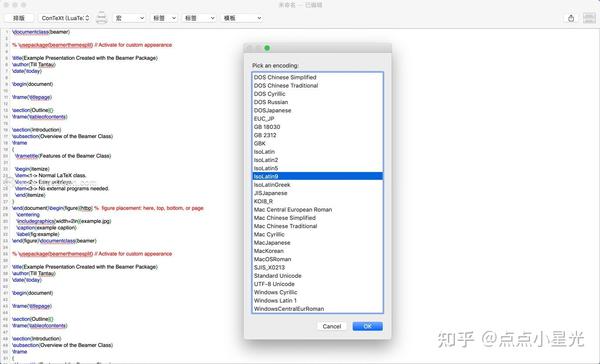

- #Texshop tutorial mac how to#
- #Texshop tutorial mac install#
- #Texshop tutorial mac update#
- #Texshop tutorial mac code#
- #Texshop tutorial mac download#
#Texshop tutorial mac how to#
Manuscript to the printer, with instructions for how to print. When you run LaTeX on your document, it is like sending your Pen marks, indicating to the publisher how to print the text.
#Texshop tutorial mac code#
Imagine the bits of code in your document are like a book editor's red That analogy makes you more confused, perhaps think about it like this: You're familiar with HTML, this is exactly what LaTeX is like. Of code in a plain text document and uses that to typeset the text. Lists are relatively easy in TeX and there are three basic types.LaTeX is a markup language, which means it finds little snippets If you only use one set of curly brackets (like with other TeX commands), the entire sentence will be in that particular font size. Note the use of a curly bracket before the \ command and the two curly brackets at the end. It corresponds to a text size of roughly 23 pt. Sections are defined by the command \section, with the section title again going in between two curly brackets, for example: \section font size. The abstract text for your document always goes after the title and before the main body of your document. Once you've installed everything, then it's time to create your first TeX document! For beginners, I would recommend a dedicated TeX editor as it makes learning to write in TeX a lot easier! You can also write TeX in commercial code editors such as Sublime Text with the relevant syntax, but you will need to open any documents up in a TeX editor so that they can be rendered. There are also other options out there, such as TeXstudio and the commercial Texpad offering, which I reviewed last year on Mac AppStorm. With MacTeX, you get a couple of free solutions ( TeXworks, which I will use for this tutorial, and TeXShop). However, I would recommend a specific TeX editor as you often get a handy list of tools with them (such as auto-complete and error reporting, which flags up any errors in your TeX coding before the document is rendered). Just like HTML, you can write TeX is virtually any text editor or word processing package. If you've installed all the available updates in the TeX Live Utility, then you should be presented with this screen.
#Texshop tutorial mac update#
Once you've installed it (it'll pop up in a dedicated TeX folder in your applications) then run the TeX Live Utility, which will update your TeX distribution to the latest version.
#Texshop tutorial mac download#
You can download MacTeX directly here (direct download link – the file is approximately 2.1 GB in size) or via the Torrent network. There are quite a few TeX distributions out there that work with OS X, but my personal recommendation would be MacTeX, which is specifically written for the Mac and supports pretty much all OS X versions (including Mountain Lion).
#Texshop tutorial mac install#
In order to be able to write TeX documents on your Mac, you'll first need to download and install a distribution, which renders your documents. If anyone has had to write a long formula in, say, the Equation Editor of Microsoft Word, then they will know how fiddly it is.īefore we get started with our first TeX document, there are a couple of things you need to install on your Mac first.

TeX is used heavily in the academic and scientific world, mostly due to the standardized layout and look of documents (though this can be changed), as well as the fact that TeX renders mathematical formulas extremely well (one of its fortes). His aim with TeX was to create a system so that documents would look the same across all computers and that the look of the documents wouldn't diminish with time. Basically, it is a typesetting language that was designed and developed (mostly) by Donald Knuth, a professor at Stanford University, back in the 1970s. I think it would be prudent to first give you a brief introduction of TeX and why it's so popular within certain circles. This may sound a bit scary, but TeX is a lot simpler to learn than other programming languages and once you've used it for a while you'll soon pick it up really easy.

With TeX, you have to learn the various commands before you can start creating documents. It's not as simple as just opening up a word processor such as Pages or Microsoft Word and tapping away. What scares people away from TeX is its learning curve. This tutorial will show you the basics of TeX – how it works and how you can create a nice, simple document with very little effort. TeX is a wonderful and very versatile typesetting system that can be used to write almost anything – from reports to letters and even more complicated documents such as books and posters.


 0 kommentar(er)
0 kommentar(er)
